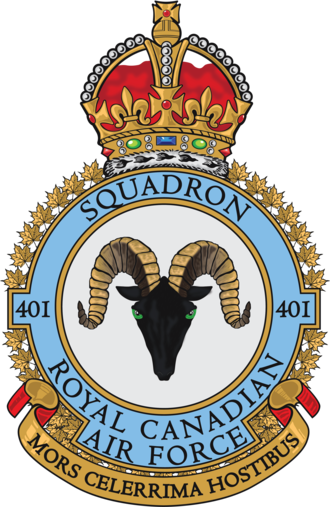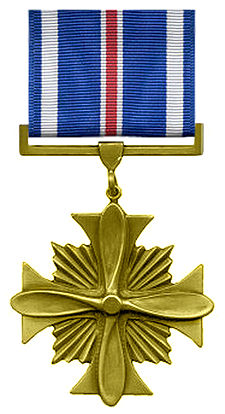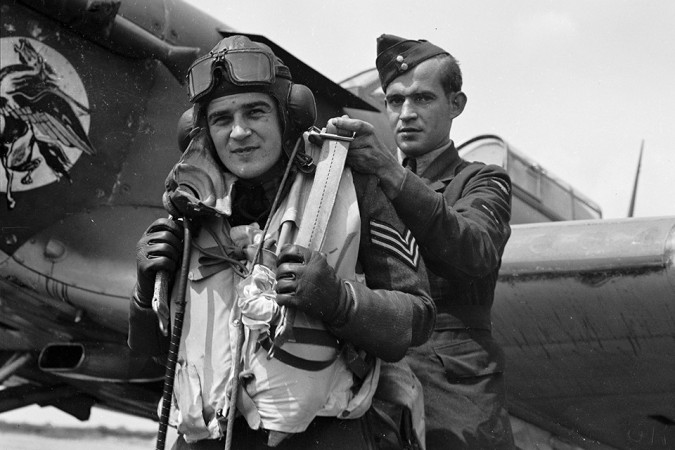
An ace fighter pilot - Flight Sergeant Joseph Auguste Omer Levesque
Flight Sergeant Joseph Auguste Omer Levesque
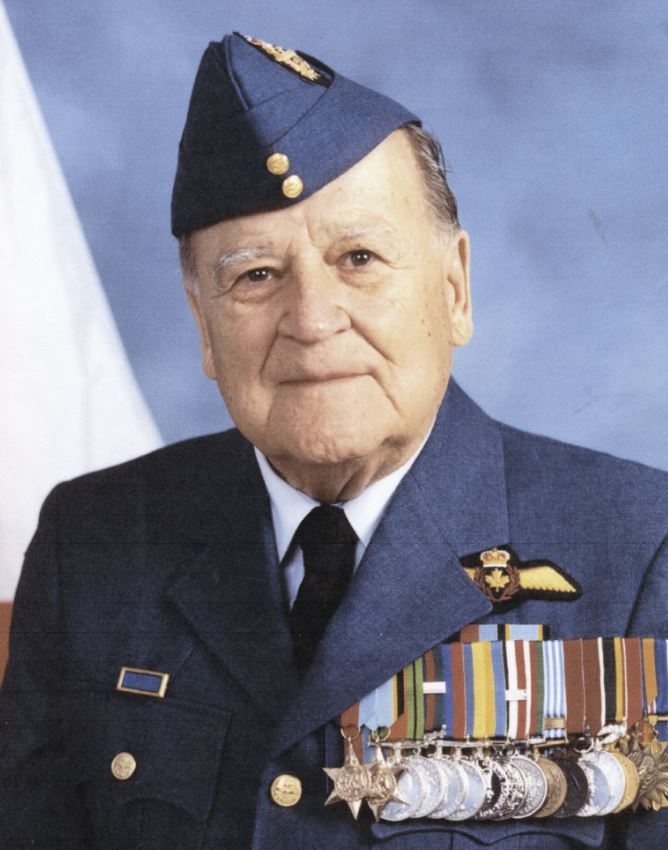
Section 27, Range F, Grave 263
Joseph Auguste Omer Levesque was born on May 23, 1920 in Mont-Joli, Quebec. In 1940, he left his home town to enlist in the Royal Canadian Air Force.
After graduating as a pilot, Sgt Levesque was sent to England and, after some additional training, he joined No. 401 RCAF Squadron of Fighter Command. Based in southern England, the squadron's Spitfire fighters intercepted German bombers and their fighter escorts, and also made sweeps over France to attack enemy aircraft.
No. 1 Squadron Royal Canadian Air Force was formed as a fighter unit at Trenton, Ontario on 21 September 1937 with Siskin aircraft. The squadron was formed from the Fighter Flight of No. 3 (Bomber) Squadron. In August 1938, the squadron moved to Calgary, Alberta and was re-equipped with Hawker Hurricane aircraft in February 1939. While stationed in Calgary, the squadron was commanded by S/L Elmer Garfield Fullerton. It was mobilized at Saint-Hubert, Quebec on 10 September 1939, and on 5 November 1939 it moved to Dartmouth, Nova Scotia.
The unit began as a permanent peacetime unit which, augmented by personnel from RCAF No. 115 Squadron (Auxiliary), arrived at its first base in the UK, Middle Wallop, on 21 June 1940. It had brought its own Hurricanes from Canada, and as these were not fully up to UK standard, the squadron was non-operational until mid-August when it moved to RAF Northolt. At the time the squadron comprised 27 officers (21 pilots) and 314 airmen. To gain experience of Fighter Command operations, S/L E.A. McNab, Commanding Officer, flew on operations attached to No. 111 Squadron, and claimed a He 111 bomber destroyed on 11 August 1940.
On November 21, 1941, during such a sweep, the squadron encountered German fighters and in a combat that followed, Levesque destroyed at least one Focke-Wulf 190, the first RCAF success over this type of German fighter. By early 1942 Omer had shot down four enemy aircraft, one short of ace status.
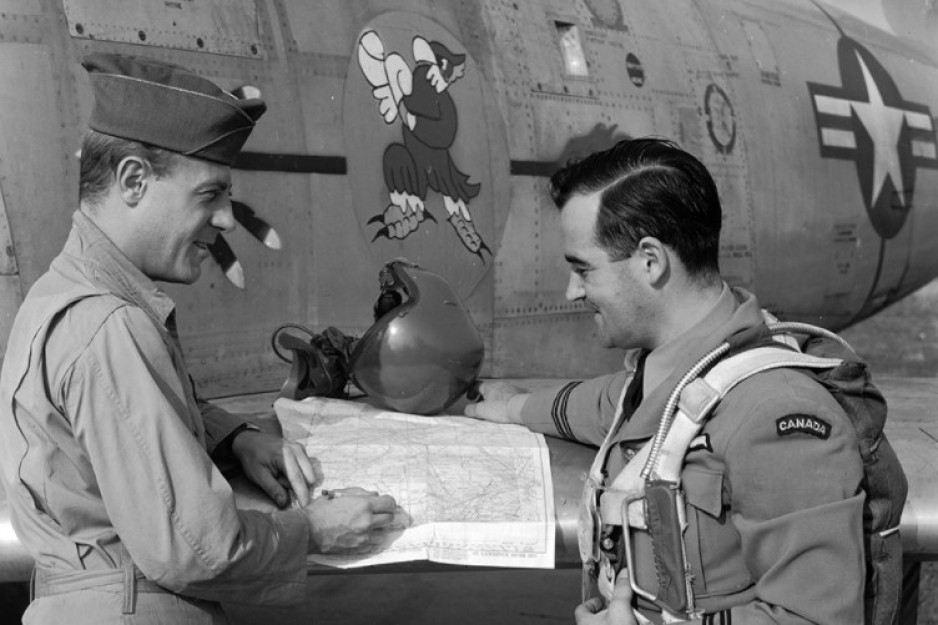
On February 12, 1942 Levesque’s Spitfire was shot down and he became a prisoner of war. In his diary, he recorded such events as the volleyball games he took part in, the arrival of a parcel from his father in Mont-Joli, and he made many sketches, one showing his Spitfire being chased by a FW 190. When WWII ended Levesque remained a pilot in the RCAF, but the Spitfire was replaced by the Sabre jet fighter.
In 1948, the Canadian government decided to re-equip the RCAF with the F-86 Sabre with Canadair contracted to produce them in Montreal, Quebec, Canada. An initial batch of 10 aircraft was ordered for tool verification. The Korean War changed this to a production batch of 100 aircraft. Canadair slowly built up its production facility to make all components with related equipment obtained from other Canadian suppliers. Canadair gave the Sabre the project number CL-13.
In 1950, he was among a group of RCAF pilots transferred to a squadron of the US Air Force on exchange duty. Levesque's US Air Force squadron was based in Japan during the Korean War, its Sabres escorting bombers, to targets in Korea where Russian-built MiG jet fighters tried to intercept them. Combats between Sabres and MiGs took place at speeds almost double that of Levesque's Spitfire and in an action in March, 1951 he dove on an MiG, his Sabre breaking the sound barrier as he shot the other aircraft down.
On March 31, 1951, Levesque lived to see another day by sheer luck. He was part of two squadrons of F-86 Sabre jet fighters that were tasked to protect a large squadron of Boeing B-29 Superfortress bombers. These bombers were there to attack bridges on the Yalu River, in order to cut off transportation of Chinese troops and supplies into North Korea. During this escort mission, the squad leader called out enemy MiG jet fighters coming from different directions.
In order to reduce drag, weight, and to increase maneuverability, Levesque and his squadron dropped their auxiliary fuel tanks before turning towards the enemy MiGs to engage them. While he chased a MiG, it pulled into the sun to try to disappear in its glare. Luckily for Levesque, he was wearing dark sunglasses and this allowed him to keep the MiG in sight. During the chase, Levesque managed to shoot down the enemy MiG in a corkscrewing dogfight. After this engagement, he was mistaken for an enemy MiG and was almost shot down by friendly fire when he rejoined the B-29 squadron. Levesque’s luck held out again; the B-29 missed him before he waggled his plane to let the B-29 know that he was friendly.
He became the first Canadian pilot to be successful in a combat against an MiG, and when this victory was added to those of WWII he became an ace. His achievements earned him the USAF Air Medal and the Distinguished Flying Cross. It was usually awarded to those who flew 20 missions or more in a certain period of time. During his tour in Korea, he completed 71 operational sorties with the United States Air Force 334th Fighter Interceptor Squadron before returning home to Canada in June 1951.
The Air Medal (AM) is a military decoration of the United States Armed Forces. It was created in 1942 and is awarded for single acts of heroism or meritorious achievement while participating in aerial flight.
The Distinguished Flying Cross (DFC) is a military decoration of the United States Armed Forces. The medal was established on July 2, 1926, and is currently awarded to any persons who, after April 6, 1917, distinguish themselves by single acts of heroism or extraordinary achievement while participating in aerial flight. Both heroism and extraordinary achievement are entirely distinctive, involving operations that are not routine. The medal may be awarded to friendly foreign military members in ranks equivalent to U.S. Pay Grade of O-6 and below, in actual combat in support operations.
When he left the RCAF, Flight Lieutenant Levesque continued his career in aviation as an official of the Canadian Transport Commission. His experience as a pilot spanned the years from propeller-driven to jet-engine aircraft, and he became an ace fighter pilot flying both the piston-engine, propeller-driven Spitfire and the Sabre jet fighter.
Levesque died June 2, 2006.


